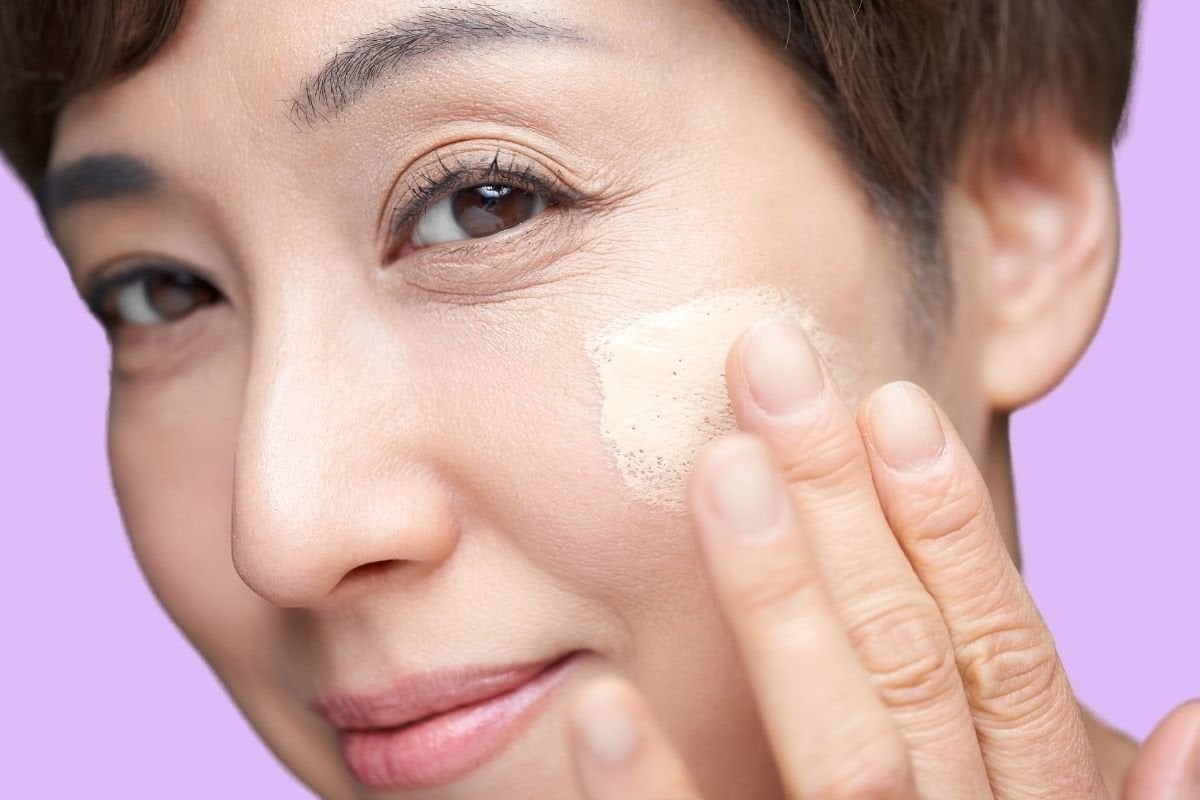
Nabbing smooth, dewy foundation is a task at any age, but when you throw things like fine lines, wrinkles and dry skin into the equation (rude), it all gets a WEE BIT HARD.
Look, there are some outstanding formulations out there for mature skin (hydrating! lightweight! won't tell fibs!), but more often than not they can all end up looking a little... meh on your skin. You know?
The foundation that was supposed to help enhance your complexion, ends up just hanging out in your fine lines, playing cards and smoking ciggies. Sigh.
Watch: Here are some tips for colour correcting your makeup. Post continues below.
But, you guys. What if it wasn't the foundation? What if it was something as simple as the way you've been applying it?
Because there are some Rather Easy Things you can forget to do when it comes to slapping foundation on your face. And these things might just be the difference between lovely healthy looking skin, and stage paint that looks like it was applied by a four-year-old in the dark.
So, you know what we did? We've asked celebrity makeup artist Michael Brown to give us some of his top tips on the best things you can do when it comes to applying foundation in your 40s and above.
Tip #1: Moisturise.
Obviously! We hear you say. But are you actually doing it? Didn't think so.

Top Comments